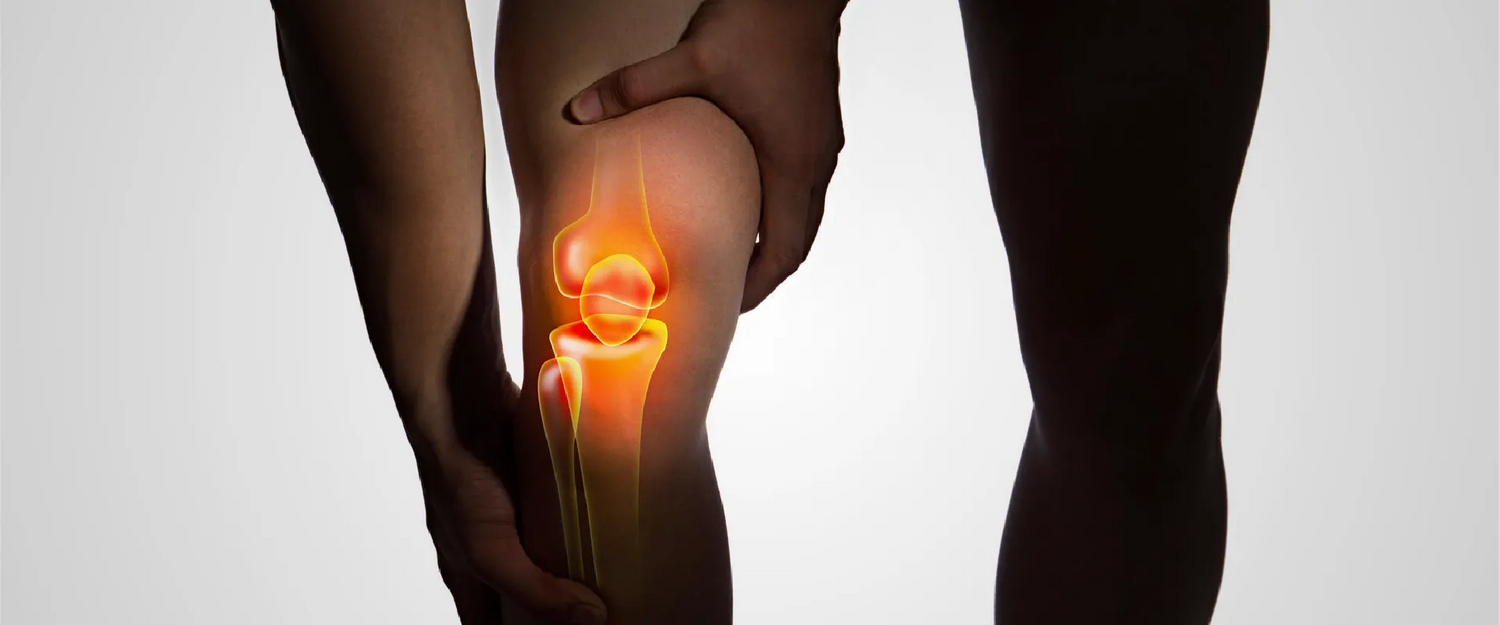Senolytic drugs are a promising avenue for addressing joint diseases by targeting senescent cells, which accumulate with age and contribute to tissue dysfunction. These drugs aim to selectively eliminate these ageing cells, promoting tissue regeneration and reducing inflammation. The potential impact on joint health has garnered attention in the field of regenerative medicine.
Understanding Joints and Their Disorders
Joints are places in our body where two bones meet and are part of our skeletal system. There are hundreds of joints throughout the body. They are differentiated based on their function and composition. From head to toe, you will find joint support. Joints support our body by providing movement-sit, stand, and move. Not all joints help in moving some provide support also. Joint diseases are a common problem these days. Millions of people are affected by these diseases. They cause pain, inflammation, and stiffness of the joints. Due to this people can't even walk or move around. Joint problems can happen through overuse accidents, or disease.
Arthritis
Arthritis is a group of diseases where joints such as wrists, knuckles, hips, knees, and ankles are inflamed, causing discomfort and pain. Its symptoms are mild to severe and affect all age groups.
Rheumatoid arthritis
It is an autoimmune disease where your immune system doesn't recognize the tissues lining your joints and attacks them. Due to this swelling of joints takes place leading to extreme pain and it affects joints like hands, feet, knees, and hips. It is common and 1 out of 50 people are affected every year.
Osteoarthritis
Osteoarthritis (OA) is a degenerative joint disease characterized by cartilage degradation and inflammation. Cartilage is the slippery tissue that covers the ends of bones in a joint, allowing for smooth movement. In OA, the cartilage gradually wears away, leading to pain, swelling, and reduced joint flexibility. As the condition progresses, bones may rub directly against each other, causing further damage. Osteoarthritis commonly affects weight-bearing joints such as the knees, hips, and spine, but it can also impact other joints. It is often associated with ageing, joint overuse, and genetic factors.
Hip Pain
It is common and affects both children and adults. It is a pain around your hip joint. Your hip joint is where your thigh bone connects to the pelvis. It is the largest joint in the body and is under constant movement. It can be short-term or chronic. Pain is felt close to the surface or above your hip, deeper inside your hip joint, and in your lower back. It also can come and go at any time.
Joint Pain and Swelling
Swollen joints occur due to fluid in the tissues around the joints. It causes pain and makes it challenging to move the affected joints. Swelling can sometimes make the joints look larger or strangely shaped. Multiple joints may get affected at once by joint pain and swelling. The joints that are most frequently affected by pain and swelling include the elbows, wrists, shoulders, base of the spine, hand knuckles, hips, knees, and ankles. Chronic joint pain and swelling can also be caused by rheumatic conditions- a disorder that affects joints, ligaments, bones, tendons, and muscles.
Knee Injuries
The legs can bend and straighten thanks to the knees, which also give the body steady support. The largest joint in the body i.e., the knee is prone to injury. Typical knee injuries consist of sprain, or excessively stretched knee ligaments, anterior cruciate ligament (ACL) or posterior cruciate ligament (PCL) tears, stresses caused by overstretching tendons and muscles, injury to the knee's lining cartilage, etc., Fractures, kneecap dislocations, and knee joint dislocations also are less common injuries.
Bursitis
It is an inflammation of the small fluid-filled bursae that protect the tendon where it touches the bone. During movement, the tendons slide over the bones causing friction. These bursae minimize the fiction. The muscles are connected to bones with the help of a strong fibrous cord known as tendons. Swelling of the bursa occurs when it is inflamed or irritated, leading to restricted joint movement. It is common in knee and shoulder, hip, elbow, wrist, ankle, and heel.
Ehlers-Danlos syndrome (EDS)
It is a genetic condition that affects joints making them loose and the skin around or on it stretchy and fragile. In some cases the the skin gets bruised or stretched easily and joints are not flexible due to frequent dislocations which leads to pain in the joints.
Causes of Joint Diseases
There are various causes of joint diseases. Most of them are caused due to less movement and flexibility of the joints.
- Age- As age increases, joint movement becomes stiffer and flexibility reduces because the fluid that lubricates inside your joints decreases which leads to thinning of the cartilage. The ligaments also lose flexibility. Most of the joint disorders are caused due to less exercise.
- Genetic factors- Some joint disorders like OA are sometimes caused by heredity. The hip, hand, and spine diseases are said to be 40-70% hereditary. These changes occur due to mutations in the genes that help in forming and maintaining bone and cartilage (1).
- Smoking- It increases inflammation in people with rheumatoid arthritis and attacks our own immune system. The synovium tissue that lines the joints becomes inflamed and thickened. Tobacco also consists of a lot of free radicals that stress your joints and trigger inflammation.
- Diet-Eating unhealthy foods such as processed, fatty fast foods, refined carbs, red meat, and food containing high sugar levels should be avoided because they cause inflammation and weight gain.
- Injury- Traumatic injuries such as broken bones, sprains, and dislocations cause acute injuries. Overuse of injured joints can cause tendonitis and fractures. In some cases, uric acid crystals deposit form in the joint leading to gout.
- Inflammation- Rheumatoid arthritis is caused due to the thickening of the joint lining which releases chemicals and leads to swelling, redness, and heat.
- Obesity- Being overweight or obese leads to increased loading in the weight-bearing joints (ankles, knees, hips, joints of the feet, pelvis, and lower back), which are helpful in daily chores.
- Infections- Septic arthritis is caused by bacterial, fungal, or viral infections. It develops a skin infection that enters your bloodstream and then to the joints.
Symptoms of Joint Diseases
The term "joint diseases" refers to a broad category of disorders that affect the joints leading to various symptoms based on the particular disease and its severity. It is important to know the common causes and symptoms of joint diseases and early regions, detection, and management are important to avoid further pain. The joint disease symptoms include
Pain
It is a common hallmark of joint diseases. Many different joint diseases, such as arthritis, bursitis, tendinitis, and ligament sprains, are frequently accompanied by joint pain. It can be due to joint degeneration, injury, or inflammation. The pain can be acute or chronic, moderate or severe. Joint pain can be extremely painful and can make daily activities challenging. Joint deformity, loss of range of motion, and muscle weakness can also result from it.
Stiffness
One of the most prevalent signs of joint disease is stiffness, which is frequently accompanied by pain. It is caused due to joint degeneration, injury, or inflammation. Your ability to move your joints freely may be hampered by stiffness, which worsens in the morning or after extended periods of inactivity. Osteoarthritis, bursitis, tendinitis, ligament damage, and cartilage tears are common causes of stiff joints. Depending on the underlying cause, physical therapy, ice, heat, rest, and painkillers may all be used to treat stiff joints.
Redness
Redness of joints is caused due to inflammation of the joint. Sometimes reactive arthritis also is responsible for redness and swelling of various joints in the body mainly in the knees, feet, toes, hips, and ankles. It is caused due to infection. The synovium is a connective tissue that lines the inner synovial joint capsules. When infection occurs the synovium thickens and makes the joint look red and swollen causing extra pain.
Warmth
Warm or hot joints are signs of inflammation caused by arthritis, trauma, infections, and bursitis. Joints that are warm and uncomfortable because the warmth is accompanied by swelling and redness.
The Effect Accumulation of senescent cells on Joints
The main causes of joint diseases are inflammation and cellular senescence. Cellular senescence has multiple effects on musculoskeletal diseases such as osteoarthritis and osteoporosis. In OA, synovium gets swollen which is a symptom of disease pathogenesis. Elimination of senescent osteocytes (bone-forming cells) improved bone health in animal model studies. The accumulation of senescent cells in tissues leads to age-related diseases. Individuals with OA showed these features of senescence-increased expression of nitric oxide, proinflammatory cytokines-IL-1β, p16, DNA damage response, free radicals production, and SA-β-Gal activity (Rizzo et al., 2023).
Senolytics as Therapeutics in Joint Diseases
Senolytics are pharmaceutical supplements designed to eliminate senescent cells. Cellular senescence is a stage in the cell cycle where arrest occurs, and cells become resistant to apoptosis. Senescent cells produce a factor known as the Senescence-Associated Secretory Phenotype (SASP), which affects the healthy cells surrounding them. These cells are linked to the ageing process and contribute to inflammation and tissue degeneration in joints. Given their inflammation-reducing properties, senolytics have the potential to improve joint health, emphasizing their role in addressing age-related issues and enhancing mobility.
Leaps into the Clinical Trials
- Osteoarthritis: In this study, scientists from Korea discussed the use of senolytic drugs to reduce pain by eliminating senescent cells (SnCs). The study used a mouse model of Osteoarthritis and found that treatment with ABT263 or a combination of Dasatinib (D) and Quercetin (Q) reduced pain without affecting cartilage degeneration. The researchers suggest that this is because the drugs reduce peripheral nerve fibre innervation and nociceptive signalling. They also found that the drugs reduced angiogenesis in the knee joint. This study provides evidence that senolytic drugs may be an effective treatment for Osteoarthritis pain (Gil et al., 2022).
- Maintaining Joint Integrity: In another study, the age-related changes that occur in osteoarthritis are changes in joint components- articular cartilage, synovium, muscles, and ligaments. Senescent cells were present in patients post-arthritis. Chondrocytes produce proteins required for extracellular matrix and proteoglycans that help in supporting and maintaining the structural integrity of cartilage. Senescent cells were found in patients with knee and hip joint diseases. Senolytics eliminate these senescent chondrocytes which are responsible for cartilage degeneration, promoting healthy joints (Zhang et al., 2021).
- Fisetin for Osteoarthritis: A study by Zheng et al, explored fisetin's impact on OA in vitro and in vivo. In vitro, fisetin reduced pro-inflammatory chemicals and preserved Sox-9, aggrecan, and collagen-II. Fisetin activated anti-inflammatory action through SIRT1 activation. In vivo, fisetin-treated mice showed reduced cartilage destruction, lower OARSI scores, decreased subchondral bone plate thickness, and alleviated inflamed joints. These findings propose fisetin as a potential OA treatment
Conclusion
This overview delves into various joint diseases, particularly bursitis, arthritis, and OA, shedding light on their signs and causes, impacting millions globally. Shifting to senolytic medications, the research showcases promising results in managing degenerative joint disorders like osteoarthritis and low back pain from intervertebral disc degeneration. Senolytics' ability to target senescent cells indicates a promising avenue for future joint disease therapies, signalling a shift in pain management and disease progression.
FAQs
1) How do joint diseases impact daily life?
It is common to have stiff and painful joints in the morning and difficult to do their daily chores like cleaning, garden work, climbing stairs, cooking, and other recreational activities.
2) Are senolytic drugs a cure for joint diseases?
Senolytics eliminate the senescent cells from our body and some drugs like o-vanillin and ABT263 reduce joint pain.
3) What are some lifestyle changes that prevent joint disease?
The lifestyle changes that prevent joint diseases are eating a healthy diet, exercising regularly, maintaining a healthy weight, avoiding smoking, and paying attention to pain.
4) What is the most common joint disease?
Osteoarthritis is the most common joint disease which results in extreme pain and stiffness of the joints.
5) What causes weak joints?
Due to a lack of exercise, and movement, the fluid keeps moving which causes the shrinkage of cartilage making it hard and reducing joint mobility.
References
Rizzo, M. G., Best, T. M., Huard, J., Philippon, M., Hornicek, F., Duan, Z., ... & Kouroupis, D. (2023). Therapeutic Perspectives for Inflammation and Senescence in Osteoarthritis Using Mesenchymal Stem Cells, Mesenchymal Stem Cell-Derived Extracellular Vesicles and Senolytic Agents. Cells, 12(10), 1421.
https://doi.org/10.3390/cells12101421
Gil, T. H., Zheng, H., Lee, H. G., Shin, J. W., Hwang, S. W., Jang, K. M., & Jeon, O. H. (2022). Senolytic drugs relieve pain by reducing peripheral nociceptive signaling without modifying joint tissue damage in spontaneous osteoarthritis. Aging (Albany NY), 14(15), 6006.
https://doi.org/10.18632/aging.204204
Mannarino, M., Wu-Martinez, O., Sheng, K., Li, L., Navarro-Ramirez, R., Jarzem, P., ... & Haglund, L. (2023). Senolytic Combination Treatment Is More Potent Than Single Drugs in Reducing Inflammatory and Senescence Burden in Cells from Painful Degenerating IVDs. Biomolecules, 13(8), 1257.
https://doi.org/10.3390/biom13081257
Zhang, X. X., He, S. H., Liang, X., Li, W., Li, T. F., & Li, D. F. (2021). Aging, cell senescence, the pathogenesis and targeted therapies of osteoarthritis. Frontiers in Pharmacology, 12, 728100.
https://doi.org/10.3389/fphar.2021.728100
Nogueira-Recalde, U., Lorenzo-Gómez, I., Blanco, F. J., Loza, M. I., Grassi, D., Shirinsky, V., ... & Caramés, B. (2019). Fibrates as drugs with senolytic and autophagic activity for osteoarthritis therapy. EBioMedicine, 45, 588-605.
https://doi.org/10.1016/j.ebiom.2019.06.049
Chin, A. F., Han, J., Clement, C. C., Choi, Y., Zhang, H., Browne, M., ... & Elisseeff, J. H. (2023). Senolytic treatment reduces oxidative protein stress in an aging male murine model of post‐traumatic osteoarthritis. Aging Cell, e13979.
https://doi.org/10.1111/acel.13979
Zheng, W., Feng, Z., You, S., Zhang, H., Tao, Z., Wang, Q., Chen, H., & Wu, Y. (2017). Fisetin inhibits IL-1β-induced inflammatory response in human osteoarthritis chondrocytes through activating SIRT1 and attenuates the progression of osteoarthritis in mice. International Immunopharmacology, 45, 135-147. https://doi.org/10.1016/j.intimp.2017.02.009


















Leave a comment
All comments are moderated before being published.
This site is protected by hCaptcha and the hCaptcha Privacy Policy and Terms of Service apply.